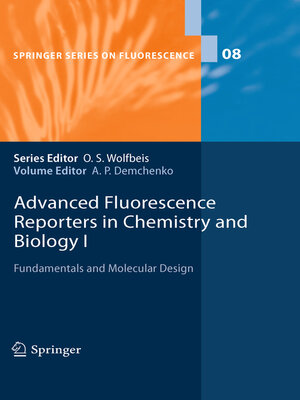Advanced Fluorescence Reporters in Chemistry and Biology I
ebook ∣ Fundamentals and Molecular Design · Springer Series on Fluorescence
By Alexander P. Demchenko

Sign up to save your library
With an OverDrive account, you can save your favorite libraries for at-a-glance information about availability. Find out more about OverDrive accounts.
Find this title in Libby, the library reading app by OverDrive.



Search for a digital library with this title
Title found at these libraries:
| Library Name | Distance |
|---|---|
| Loading... |
Fluorescence reporter is the key element of any sensing or imaging technology. Its optimal choice and implementation is very important for increasing the sensitivity, precision, multiplexing power, and also the spectral, temporal, and spatial reso- tion in different methods of research and practical analysis. Therefore, design of ?uorescence reporters with advanced properties is one of the most important problems. In this volume, top experts in this ?eld provide advanced knowledge on the design and properties of ?uorescent dyes. Organic dyes were the ?rst ?uorescent materials used for analytical purposes, and we observe that they retain their leading positions against strong competition of new materials – conjugated polymers, semiconductor nanocrystals, and metal chelating complexes. Recently, molecular and cellular biology got a valuable tool of organic ?uorophores synt- sized by cell machinery and incorporated into green ?uorescent protein and its analogs. Demands of various ?uorescence techniques operating in spectral, anisotropy, and time domains require focused design of ?uorescence reporters well adapted to these techniques. Near-IR spectral range becomes more and more attractive for various applications, and new dyes emitting in this range are strongly requested. Two-photonic ?uorescence has become one of the major tools in bioimaging, and ?uorescence reporters well adapted to this technique are in urgent need. These problems cannot be solved without the knowledge of fundamental principles of dye design and of physical phenomena behind their ?uorescence response.







